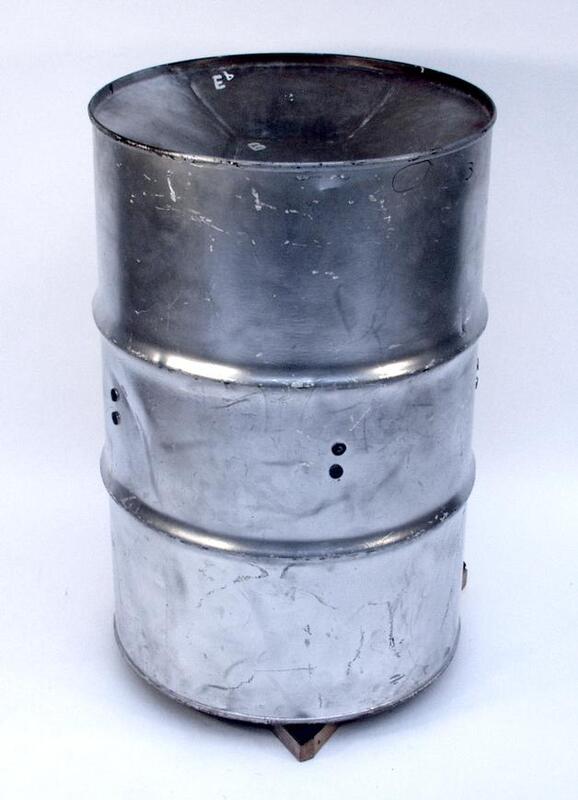Bass Pan
Title
Bass Pan
Video
Physical description
There are four types of bass instruments in the contemporary steel band: the tenor, 6, 9, or 12-bass. The tenor bass has four full-skirted barrel drums, while the other basses have six, nine or twelve drums. The collection has the 6-bass only. The “core” four or six barrels of the bass are elevated on six-inch padded wood or metal stands to allow the drums to resonate. All bass are played with mallets made with a soft sponge rubber ball on one end. The additional drums in the 9- or 12-bass instruments are suspended horizontally on racks near the front two drums. These allow for additional volume and an expanded lower range.
Historical background
The bass pan developed from the early “boom” instrument, made from a large biscuit drum (Goddard, 38). While its early predecessor was mostly utilized for its percussive beat, the contemporary bass pans play bass lines and countermelodies with other lower instruments. The design credited as the forerunner to the recently standardized bass was produced by Neville Jules in 1948 (Blake, 117).
Tuning
The bass family has a total chromatic range between E1 and F#4. The tenor bass has a range between F2 and F#4, while the 6-bass standard range is between A1 and F3, the 9-bass is between G1 and C4 and the 12-bass is between E1 and Eb4 (Blake, 116-117). Each pan has three to four notes.
Geography
Trinidad and Tobago
Classification
111.241.12 Gongs with divided surface sounding different pitches
Ensemble
Steel Pan Ensemble
Materials
Steel
Date/Era
20th century to present
Bibliography
Blake, F.I.R. The Trinidad & Tobago Steel Pan: History and Evolution. Port of Spain, Trinidad: Published by author.
Goddard, George “Sonny.” 1991. Forty Years in the Steelbands, 1939-1979. Port of Spain, Karia Press.
Steumpfle, Stephen. 1995. The Steelband Movement: The Forging of a National Art in Trinidad and Tobago. Philadelphia: Univ. of Pennsylvania Press.
Thomas, Jeffrey Todd. 1985. A History of Pan and the Evolution of the Steel Band in Trinidad and Tobago. M.A. Thesis. Middletown, CT: Wesleyan University.
Additional resources
Pan Trinbago
http://www.pantrinbago.co.tt
http://www.pantrinbago.co.tt
Contributors
Amelia Ingram (2004)
Collection
Citation
“Bass Pan,” Wesleyan University Virtual Instrument Museum 2.0, accessed December 24, 2025, https://wesomeka.wesleyan.edu/vim2/items/show/37.

